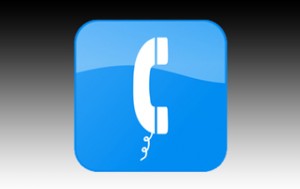 Severance agreements in California often contain diverse legal clauses and terms designed to foremost protect the employer, including provisions that can limit your rights as the departing employee. A critical part of these contracts can be the release or waiver of personal injury claims, which can dictate your ability to pursue compensation for injuries that arose during employment. Getting a handle on certain implications before signing is imperative to making informed decisions supportive of your rights and your future. If you’re considering a severance agreement in California, here is what you should know, from its weight and authority to how to protect yourself before you sign on the line.
Severance agreements in California often contain diverse legal clauses and terms designed to foremost protect the employer, including provisions that can limit your rights as the departing employee. A critical part of these contracts can be the release or waiver of personal injury claims, which can dictate your ability to pursue compensation for injuries that arose during employment. Getting a handle on certain implications before signing is imperative to making informed decisions supportive of your rights and your future. If you’re considering a severance agreement in California, here is what you should know, from its weight and authority to how to protect yourself before you sign on the line.
Severance Agreement Injury Claims: What It Means to Release a Claim
A severance agreement injury claim waiver is a common provision found in California severance packages, especially if your duties as an employee involve physical work or potential exposure to any harmful conditions.
In such agreements, the term release of claims usually covers a very wide range of possible claims that one could file against their former employer, including personal injury claims. When you sign, you may be signing away your rights to seek compensation for work-related injuries that occurred until your termination date.
Employers often like to include these waivers to mitigate their risks of future legal actions and litigation. They are especially common in industries where employees face physical risks, like construction or manufacturing positions, but can also be found in agreement across various sectors by asking you to waive the right to pursue a claim for a past injury. Your employer is effectively protecting the business from potential liability and any cost associated with an injury-related lawsuit. Despite most enterprises being established and supported by the hard physical labor of employees who may even be asked to participate in dangerous roles or harsh environments, most employers aim to safeguard themselves and their stake and protect the entity far more than the workers–remember before signing.
California Release of Claim
The legal structure surrounding severance agreements in California is arranged to ensure employees receive fair treatment and are aware of the rights they may choose to give up. When it comes to injury claims, several factors make California a unique state. In some cases, courts have scrutinized overly broad waivers that release employers from liability for serious injuries; however, it’s still critical to carefully read and understand the agreement before you sign, as California law generally allows employees to waive some claims if they do so voluntarily.
Implications of a Personal Injury Waiver in Severance Agreements
- Loss of Legal Resources For Injury-related Costs: Once you sign a severance agreement with a personal injury waiver, you typically cannot file a lawsuit or move forward in the pursuit of compensation for previous injuries that may have been associated with your employment. Or imagine you later discover that the injury you sustained is actually more severe than initially realized or more complex. The injury could then require more extensive or ongoing medical care and costs. It would be unfortunate and distressing, to say the least, to find yourself in such a situation, when you have waived your right to seek any financial support from your former employer.
- Effect on Worker’s Compensation Claims: California law requires employers to carry workers’ compensation insurance for workplace injuries. However, signing a severance agreement containing a personal injury waiver could limit your ability to claim additional damages outside of workers’ compensation. Workers’ compensation is generally not a waivable resource under a severance agreement, but a personal injury waiver could still limit other legal claims related to injury.
- Potential Effect on Disability Benefits and Accommodations: Should the injury impact your ability to work in the future, releasing your injury claims might restrict opportunities, including negotiating accommodations or pursuing disability benefits through the employer. These issues can be particularly grave or problematic should your injury impede your ability to work and thus hinder your long-term earning potential.
Key Elements to Reflect On Before Committing
Signing a severance agreement that includes a waiver for personal injury claims is a heavy decision deserving of thoughtful and informed contemplation. Here are some of the core elements you should be aware of and reviewing:
Broad vs. Limited Scope: A broad release may cover any claims from the beginning of your employment up to your final day of employment or termination date. A limited scope may focus on specific types of claims. If the waiver speaks in generalities or is more comprehensive, it could be indicative of a wider application covering all scenarios, including unforeseen injuries. Always seek clarity on what exactly is being waived and what claims may fall under the release. Self-advocacy and demanding transparency can feel overwhelming, but they will save you from regret and struggle later.
Specific Language and Legal Jargon: Legalese or legal terminology in severance agreements can become pretty convoluted. Phrases like “release of all known and unknown claims” can translate into giving up the right to sue if you become aware of an injury after signing. In California, specific language is required to wave unknown claims, but severance agreements often use particular types of phrasing to thwart future disputes.
Age and Disability Protections: If you are over 40, you qualify for and have the right to extra protections supplied through federal and state laws. The Age Discrimination and Employment Act (ADEA) is one such piece of protective legislation. ADEA mandates that the employer give you 21 days to consider an agreement and allow for a seven-day revocation. The revocation means just that to revoke your consideration and signing seven days after signing a release or severance agreement. The agreement will not go into effect until 8 days after signing, so you have the right to utilize that window and seven days where you could elect to pull your initial consent. While this doesn’t specifically cover injury waivers, it definitely adds a process of review for the more mature worker–but it is up to the individual to take advantage of it.
Potential Negotiation Leverage: Severance agreement terms are not set in stone. Yes, that’s right, but they are not; thus, you have the right to exercise your negotiation muscles. These negotiations can include the rephrasing or reworking of terms and clauses within the agreement, including injury waivers. If the employer wants you to sign a release of injury claims, you can advocate for negotiations. You may wish to negotiate for additional compensation or extended healthcare benefits to offset such a profound waiver.
Protecting Your Right Before Signing a Severance Agreement
Signing a severance agreement that includes a personal injury waiver requires a thoughtful and proactive approach. Discussing your position with an employment attorney can quickly clarify the underlying intent and implications of an agreement. Your lawyer will help you digest the details of the documents and the potential impacts if you were to sign the deal as is. Further, with their knowledge and experience, your lawyer can identify areas of concern and negotiate revisions or compensation to counteract the waiver’s effects. When necessary, they may work to facilitate the exclusion of the personal injury claims from the waiver altogether.
Before signing, take these steps to defend your rights:
- Document Any Injuries: Prior to agreeing, document any work-related injuries in great detail. Request and gather your medical records, statements from healthcare providers, and workplace incident reports. Clear documentation can support potential claims if needed.
- Request Additional Review Time: Ask your employer for extra time to review the agreement. Though California law doesn’t mandate a review period (except for ADEA protections), additional time does allow for legal consultation and a thorough assessment of waiver impacts.
- Calculate Potential Injury Costs: Evaluate any ongoing or future medical expenses related to your injury. Workers’ compensation might not cover all the costs, making it critical to weigh them against the payout of a severance agreement.
- Negotiate Terms: If the agreement includes a personal injury waiver, truly consider negotiating. Many employers are open to removing the waiver or adjusting the package, which can prove a fair severance while protecting your rights.
A severance agreement is more than a formality; it’s a binding contract between you and your former employer that can curate your legal options long after your employment ends. Contact an experienced California employment attorney by calling 909-884-6451 for a confidential and free consultation.



